
In the world of gaming, fans of Metroid, Castlevania, and Metroidvania-style games are celebrating what seems like a “Golden Era” for this subgenre, with an impressive number of promising new titles appearing almost monthly. However, this abundance also means that the genre is more crowded than ever before. While being a Metroidvania used to be enough to generate interest in a game, today’s players have a wealth of options and are looking for something fresh and unique to stand out.
ExoGenesis Studios, a new team made up of experienced developers from studios like Owlcat Games, Blizzard, and Disney, is the latest group attempting to create the next big Metroidvania hit with their game INAYAH – Life After Gods. After a successful Kickstarter campaign, INAYAH is now available on PC before its summer console release. With so many options available, the question arises: Is it worth picking up INAYAH when compared to the other games out there?
The visually stunning and smoothly animated game, INAYAH, offers an engaging combat and platforming experience when functioning optimally. However, beneath its flashes of brilliance and appealing aesthetics lies a game hampered by several frustrating design choices, such as progression economy, ability gating, limited environmental diversity, confusing map layout, and underwhelming boss battles. These issues, many of which are systemic, prevent INAYAH from reaching its full potential and becoming something truly exceptional. While it’s not a poorly designed game, neither does it excel in any notable way.
INAYAH’s Story Mostly Fails to Live Up to Its Premise
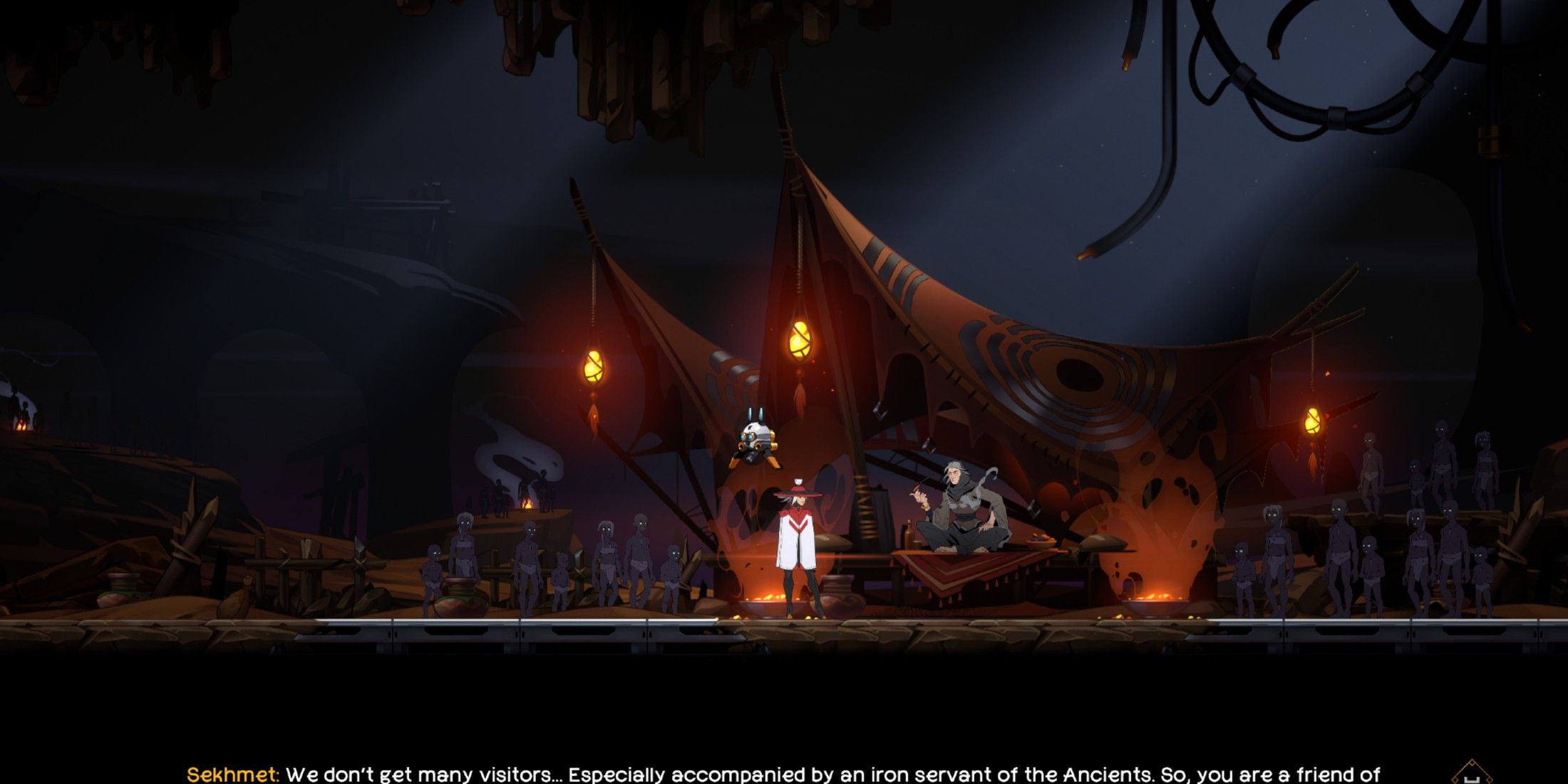
In many Metroidvania games, it’s often noted that they prioritize gameplay over character development and storytelling. Unfortunately, INAYAH – Life After Gods doesn’t deviate much from this pattern. The narrative unfolds with the protagonist, Inayah, narrating her father’s tragic death at the hands of villains called “Ironskins.” This event leads to her being orphaned and saved by a mysterious wanderer who raises her. However, the subtlety and depth derived from past traumas are quickly abandoned as Inayah transforms into a chatty character who can’t seem to stop talking once gameplay begins. Although the dialogue in INAYAH is well-written and generally effective at building characters and their motivations, the voice acting is inconsistent, with performances ranging from excellent to painfully grating.
The big surprises in INAYAH‘s narrative are easy to predict from afar, which makes the ending seem dull and unimpactful when it finally arrives. There are instances where player choices significantly impact INAYAH‘s tale, including opportunities to betray characters or abandon questlines if you align with a rival faction, but these moments are rare. Similarly, the game’s central themes, such as forming a makeshift family and realizing that escaping one’s past is impossible, leading to repeating its negative aspects, are rather predictable in a story of this type. Despite its visually appealing presentation, INAYAH‘s plot and characters seem to undermine the overall experience.
Combat and Platforming are INAYAH’s Silver Lining

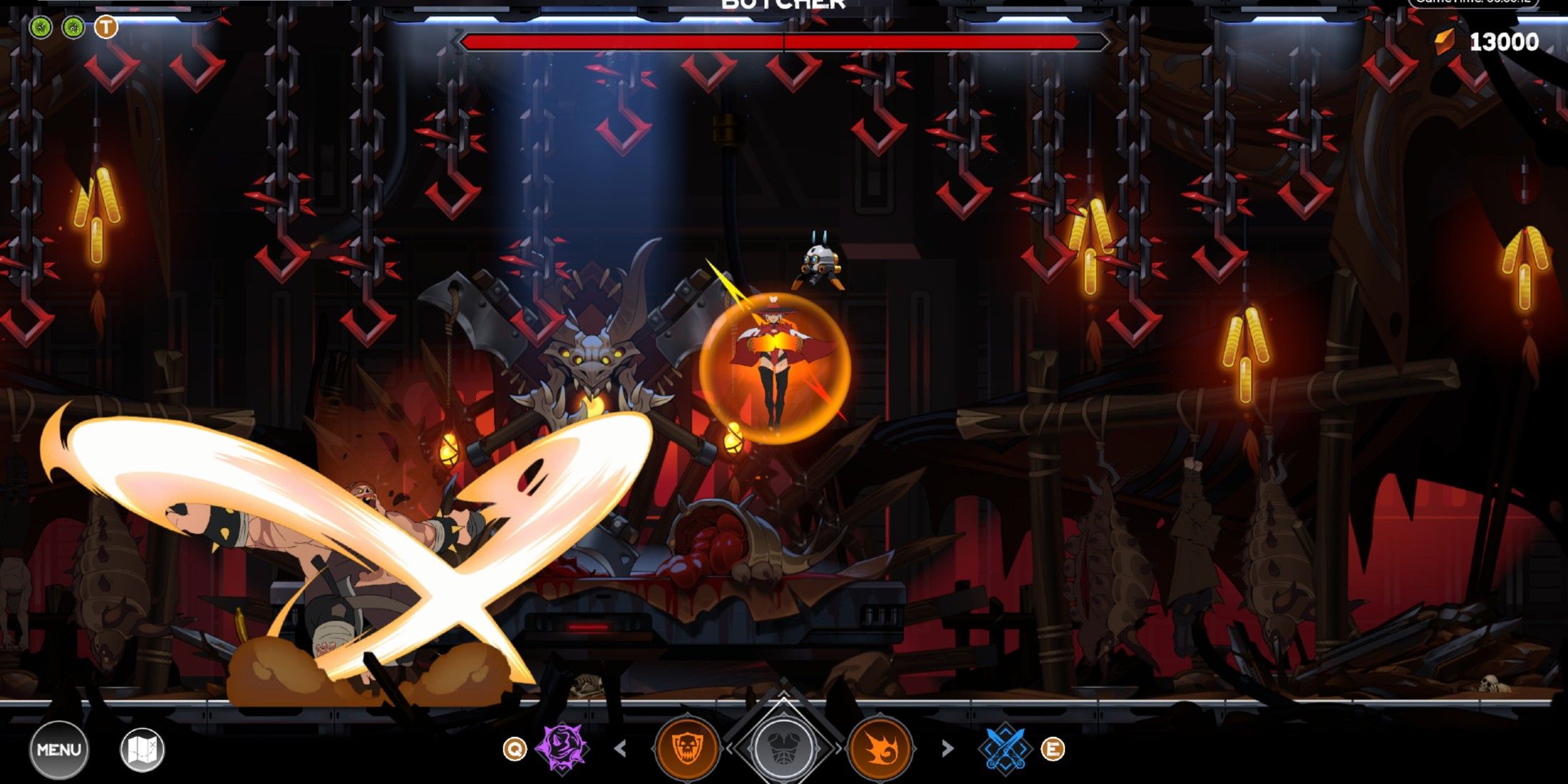
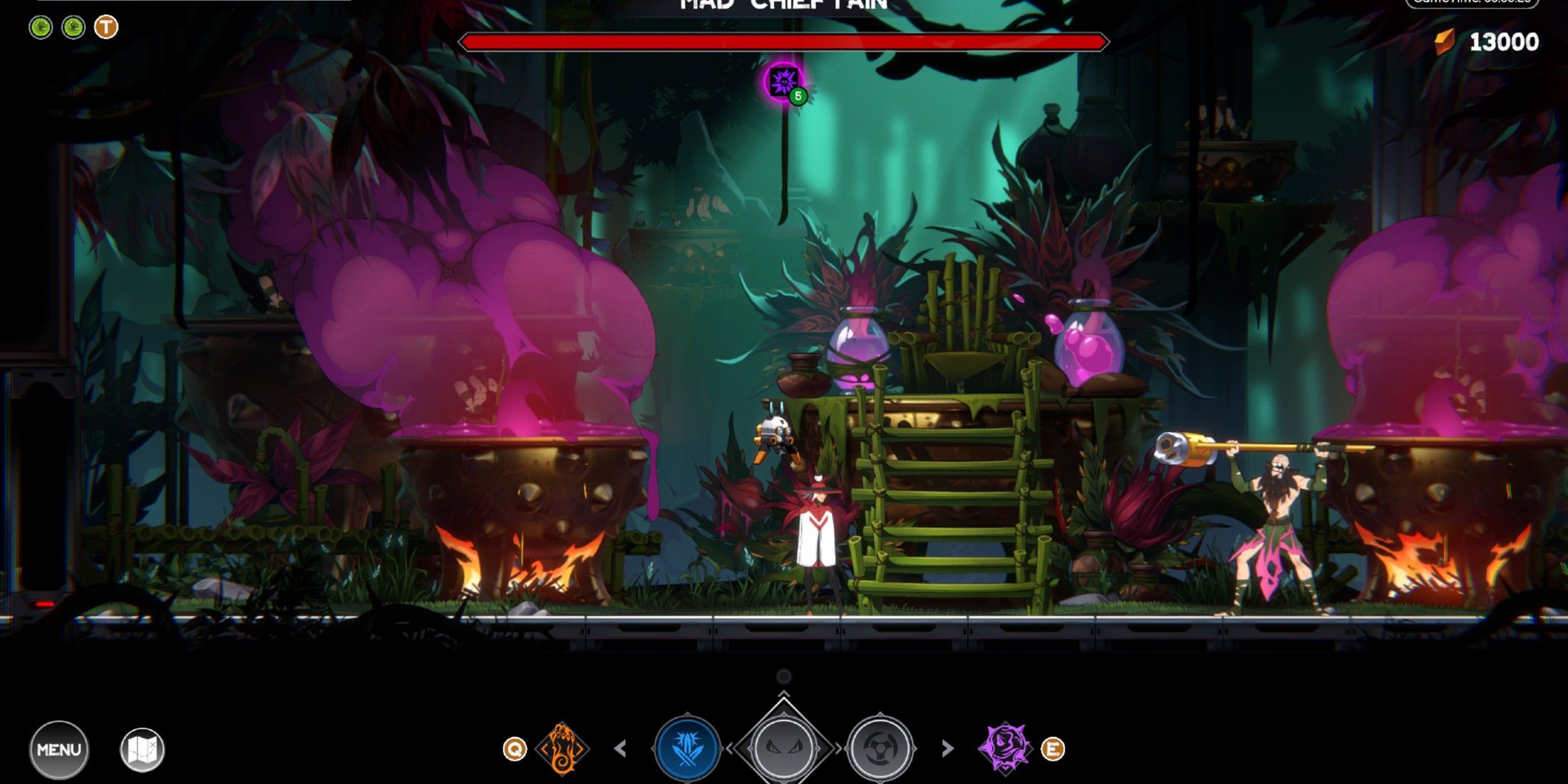
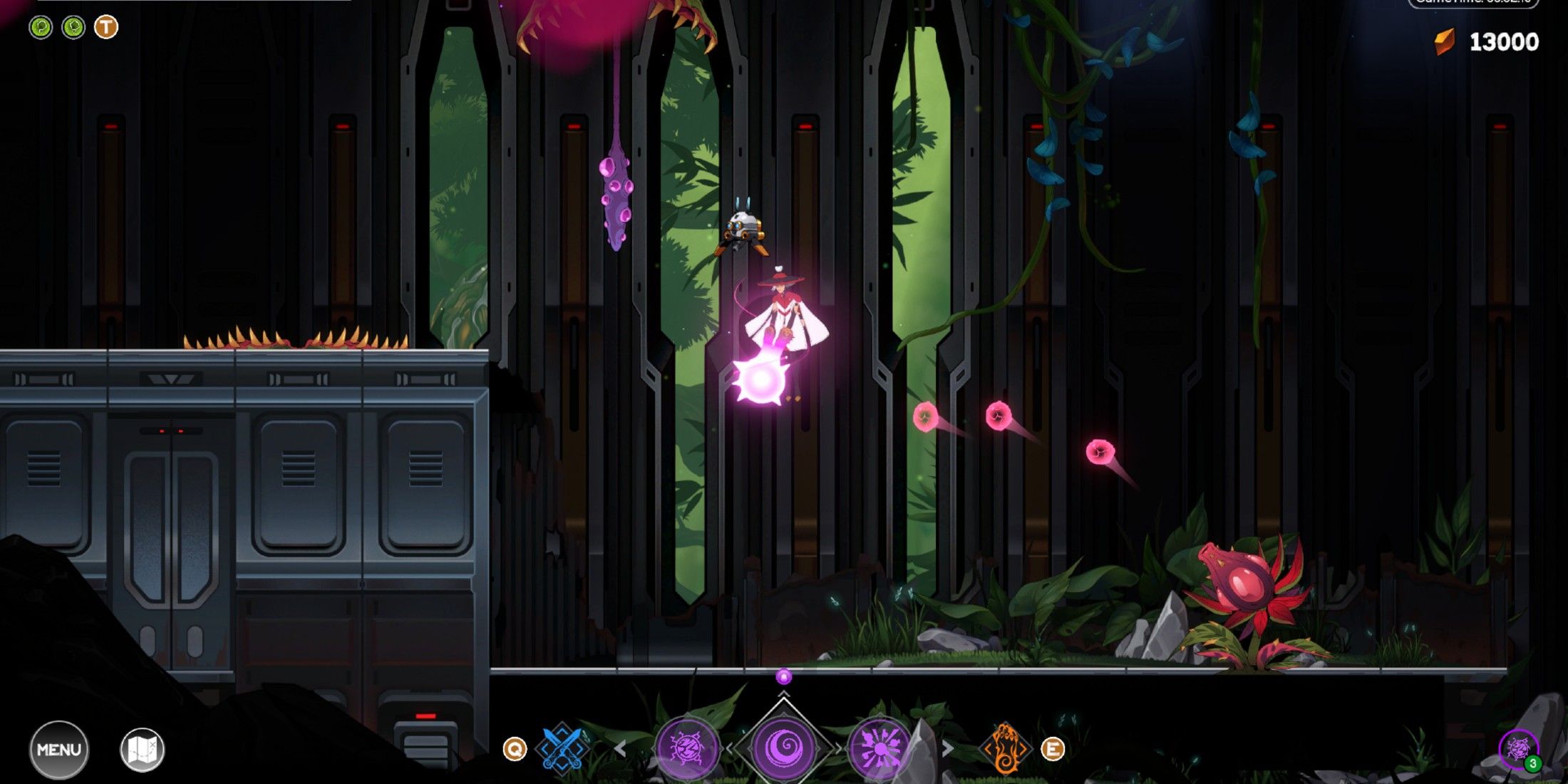
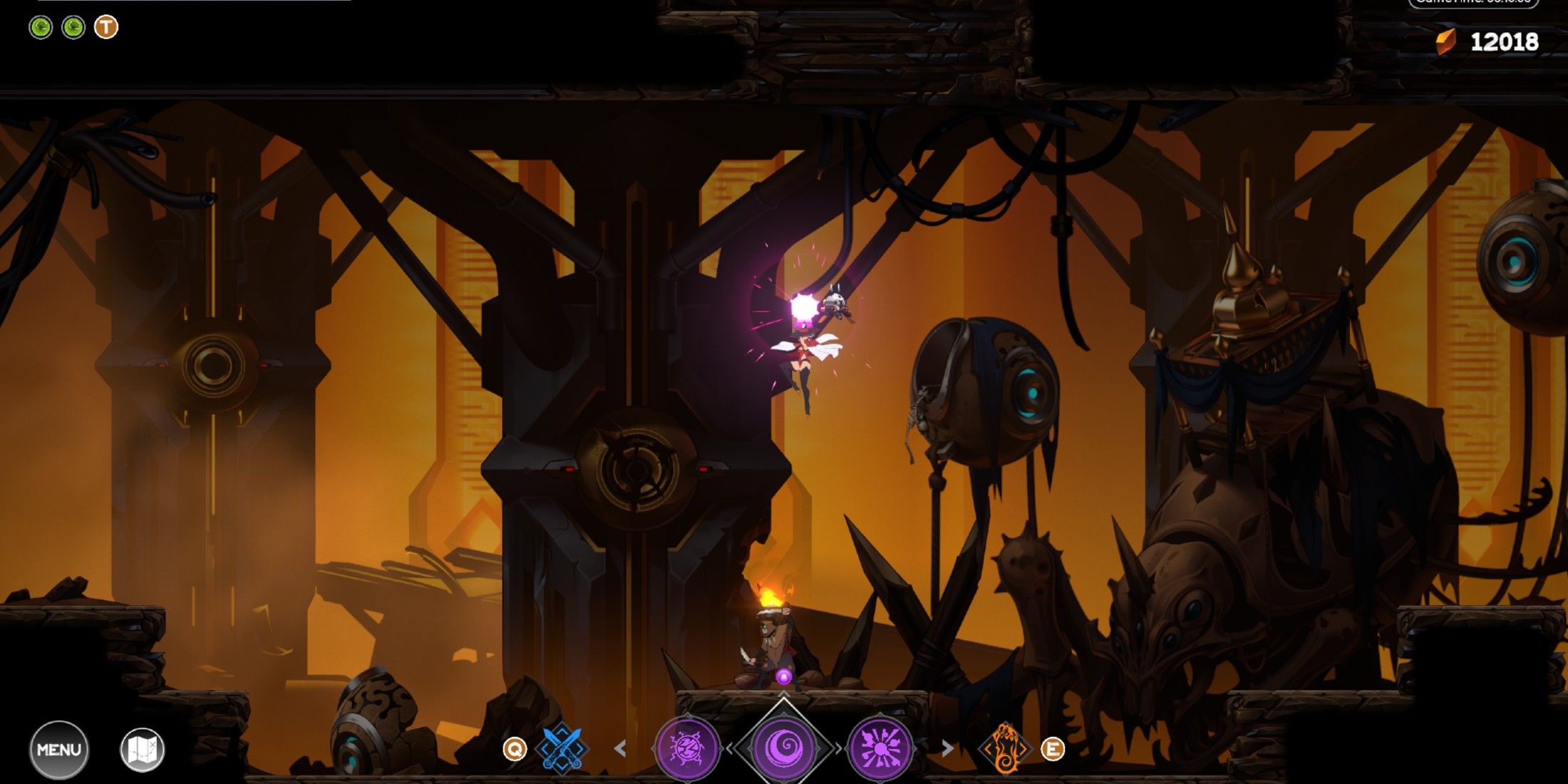
The standout feature and continuous driving force behind INAYAH, encompassing its entire gameplay duration, is its combat and platforming. Akin to The Game Kitchen’s Blasphemous 2, players commence their journey in INAYAH by selecting one of three weapons that also serves as a mobility aid. As the game progresses, players will uncover all three weapons, enabling them to switch between them freely. This flexible weapon system introduces an engaging twist to the traditional “ability-gating” structure prevalent in Metroidvania games, offering players the freedom to approach the game’s first Act based on their chosen starting weapon. Notably, each weapon is pleasing to use and collectively contributes to one of the most gratifying platforming experiences from the get-go for Inayah.
Inayah possesses a trio of distinct tools for battle: blades, flail, and fists. Each one offers a different advantage in combat and unique maneuvering capabilities that reveal new areas of the map or minimize travel time. The blades are agile and rely on combos, inflicting Nanites onto adversaries. These Nanites can boost critical hit chances, passively heal Inayah, and even serve as a temporary double jump until players gain that ability. The fists are stronger but less mobile, yet they permit Inayah to cling to specific walls and ledges. Lastly, the flail is the most potent weapon, trading power for speed. It additionally functions as the game’s grappling hook, adhering to special nodes scattered across various biomes.
Upon obtaining all three weapons by discovering artifacts from Inayah’s tribe (which include her father’s unique gauntlets), players can effortlessly switch between these weapons using either a circular menu or a shoulder button at their convenience. This flexibility results in the platforming challenges transforming into intriguing mini-puzzles, as players quickly alternate abilities in an attempt to achieve a flawless execution of a run. Over time, Inayah will acquire special Implants (a total of six) that she can equip. These implants unlock advanced abilities such as a second jump, a mid-air dash, and an extension of the blades’ upward slash, which greatly expand the map and make previously unreachable areas accessible.
On your journey, you’ll encounter a wide variety of adversaries – ranging from lethal flora and frenzied tribespeople in the forest environment to insects and outlaws in the desert terrain. The game offers a gratifying progression of power that gradually transforms these encounters from life-threatening battles to Inayah effortlessly defeating enemies with just a few strikes. Plus, the game’s beautifully crafted hand-drawn visuals and smooth animations make each action look stunning once you get into the rhythm and move swiftly across a room.
INAYAH’s Strong Points Are Ultimately Held Back By Some Confusing Design Choices

Although navigating through a room might initially appear engaging, it eventually becomes monotonous due to several design choices that undermine INAYAH‘s strengths. The most obvious of these flaws is the excessive size and grandeur of the rooms in each biome. Even though a vast map can be appealing, it only enhances the Metroidvania experience when there are significant rewards for exploration and maneuvering, such as game enhancements or gratifying platforming and combat. Regrettably, INAYAH lacks any incentives for exploration, which means that even its enjoyable platforming and combat will grow tiresome quickly, leaving you trudging from one end of a biome to another due to the game’s unimpressive fast-travel system. The rooms in INAYAH‘s map are among the largest in contemporary Metroidvanias, but their emptiness and lack of purpose make their size a hindrance rather than an advantage. To add insult to injury, many of the rooms become repetitive due to reused assets, resulting in a map that transitions from being enjoyable to explore to becoming a tedious task.
In the game INAYAH, one aspect that contradicts its robust combat is the progression economy of the title. Each weapon available to players comes with three abilities linked to a button press, in addition to a standard attack and a mobility skill. Instead of merging upgrades for these weapons into a single skill tree, each ability for the three weapons has an extensive individual skill tree. This arrangement, unfortunately, results in individual upgrades appearing insignificant and unnecessary. You’ll defeat numerous enemies and collect a good amount of the game’s currency (Dust) to upgrade regularly, but the truth is, these upgrades are not worth investing in until you can clear out an entire branch of a skill tree with a substantial amount of currency to make the effects of the upgrades noticeable. This system gives the illusion of a gradual power increase, but in reality, your power can jump dramatically from being weak to overpowered almost instantly.
Regardless of how easily you can defeat the common opponents in its four diverse landscapes, you’ll probably find it tough to conquer the game’s challenging bosses. Some battles are entertaining and require you to use all your skills, but others are trial-and-error affairs that make you feel like you’re stuck doing a never-ending task if you’ve mismanaged your skill tree or focused too heavily on one weapon over another. Unfortunately, there’s no way to respec, so you’ll have to fight weaker enemies to gather the necessary Dust for upgrades, which extends the game duration unnaturally, making it harder to enjoy a boss battle that has become monotonous.
The game INAYAH doesn’t contain anything inherently negative, but some bothersome design choices deeply embedded in its gameplay detract from even its positive aspects. Completing INAYAH, which takes around 15-20 hours, demands a significant investment of time from the player. Although there are flashes of excellence in its implementation, these are overshadowed by elements that hinder the overall experience. Given the abundance of high-quality Metroidvania games available, INAYAH‘s minor inconveniences prevent it from being a compelling choice compared to other titles that execute the formula more effectively.
Read More
- Byler Confirmed? Mike and Will’s Relationship in Stranger Things Season 5
- One-Way Quantum Streets: Superconducting Diodes Enable Directional Entanglement
- Best Job for Main Character in Octopath Traveler 0
- Quantum Circuits Reveal Hidden Connections to Gauge Theory
- Entangling Bosonic Qubits: A Step Towards Fault-Tolerant Quantum Computation
- All Exploration Challenges & Rewards in Battlefield 6 Redsec
- Upload Labs: Beginner Tips & Tricks
- Top 8 Open-World Games with the Toughest Boss Fights
- Star Wars: Zero Company – The Clone Wars Strategy Game You Didn’t Know You Needed
- What is Legendary Potential in Last Epoch?
2025-04-07 17:25